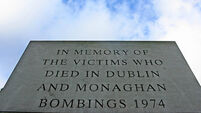Ireland of pimps and prostitutes belies the ‘comely maidens’ myth
The redoubtable Fianna Fáil TD Mary O’Rourke insisted: “We may not be open about the subject, but it is a question of men paying money to get women and of the debasement of women… the Ireland of which we speak and to which women are being trafficked is no longer the land of comely maidens and youthful swains who are seeking to meet, talk and walk with one another. Rather, it is a land of sleazy brothels where seedy acts are carried out for money.”
The idea that such exploitation is new is nonsense. Prostitution and the exploitation that goes with it are as old as Ireland itself and, historically, there was always a brisk trade as a result of the number of soldiers stationed in the country. The first Magdalen asylum was opened in Dublin in 1766 and by the early years of the last century there were at least 23 such institutions in existence to rescue and reform “fallen women”. In 1850, there were 4,650 arrests for prostitution in the Dublin metropolitan police district.
















